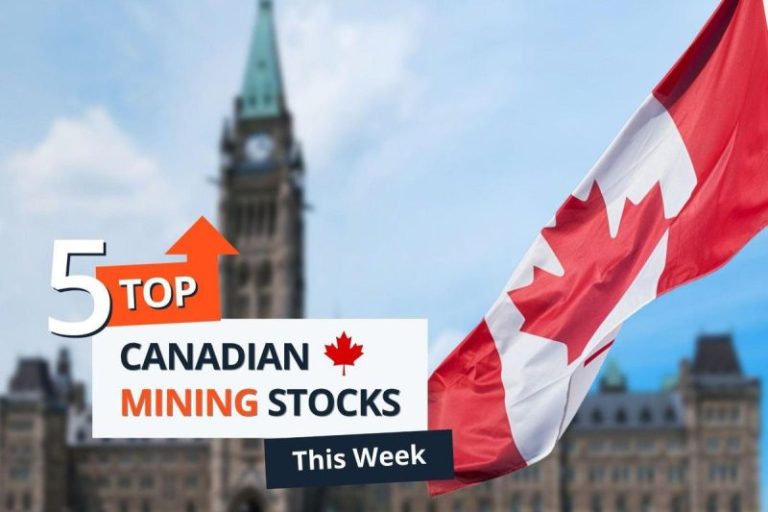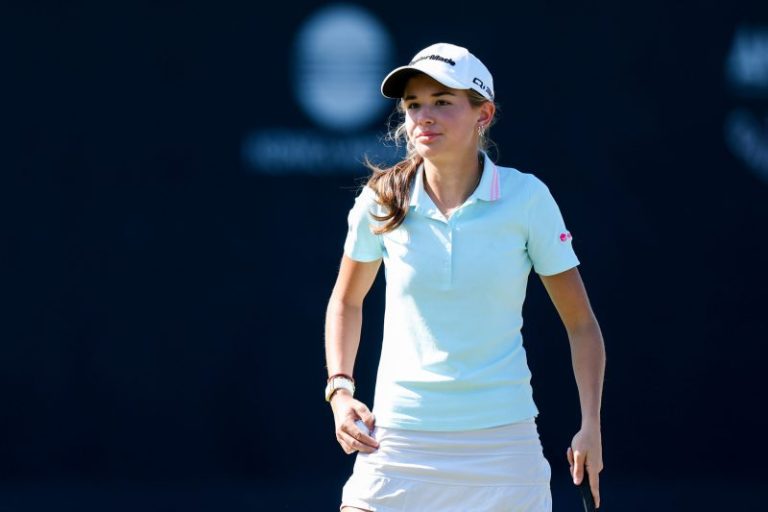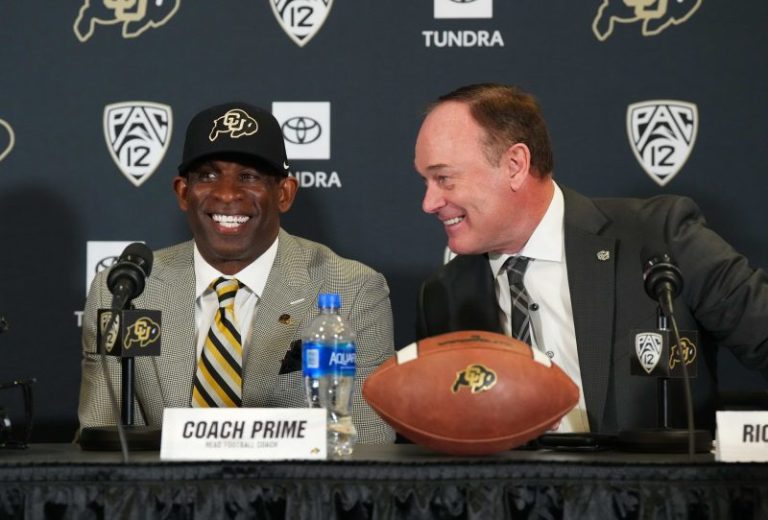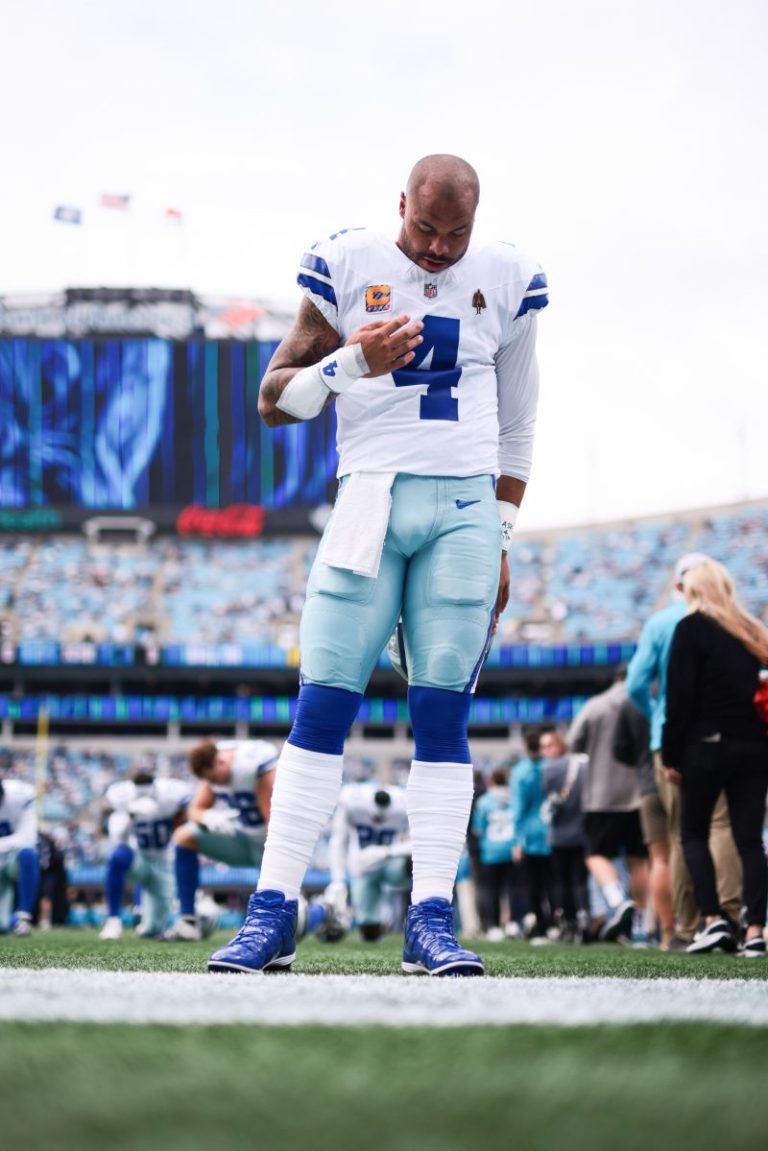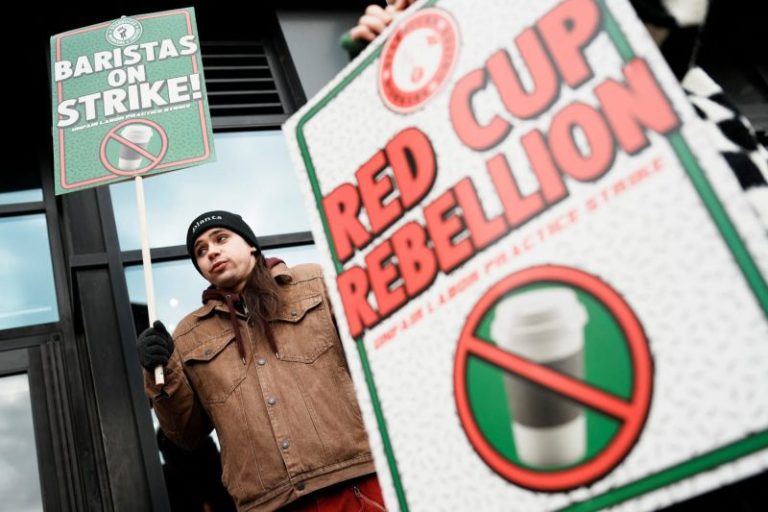Louisville’s College Football Playoff hopes took a significant hit Nov. 8 with a 29-26 home loss to Cal in overtime.
The Cardinals’ opportunity for a bounce-back win didn’t go much better.
Watch Clemson vs. Louisville football live with Fubo (free trial)
After dropping from No. 15 to No. 21 in the US LBM Coaches Poll, coach Jeff Brohm’s team tripped over itself repeatedly against Dabo Swinney and Clemson on Friday, Nov. 14 at L&N Federal Credit Union Stadium, with a series of Louisville miscues giving the Tigers a 20-19 victory.
The Cardinals missed an extra point and two field goals, the last of which would have given them the go-ahead score with 1:30 remaining. The kick wasn’t even the most disastrous part of the drive. Louisville was gifted the ball at the Clemson 23-yard line with 2:31 remaining after a bad snap on a Tigers punt attempt, but were moved back five yards due to a false start and then another 15 yards two plays later for unsportsmanlike conduct. A 14-yard completion on third-and-29 got them back within field goal range, but Brohm inserted a new kicker, Nick Keller, for a 46-yard attempt, which went wide left.
The loss dropped the Cardinals to 7-3 while Clemson improved to 5-5, getting it within a game of bowl eligibility.
Adam Randall carried (literally) Clemson to the victory, with 15 rushing attempts for 105 yards and two touchdowns. His Louisville counterpart, Keyjuan Brown, was similarly effective, with 135 yards on 15 attempts.
The Cardinals outgained the Tigers 385-305, but were penalized 10 times for 98 yards, with several of those flags coming at critical junctures in the game.
Friday’s win extended Clemson’s dominance in its series against Louisville. Since the Cardinals joined the ACC in 2014, the Tigers have won nine of the 10 matchups between the programs, with their only loss coming last season.
USA TODAY brought you live updates, scores and highlights from the game. Here are the highlights.
Clemson vs Louisville score
This section will be updated throughout the game.
Clemson vs Louisville updates
Clemson vs Louisville highlights
FINAL: Clemson 20, Louisville 19
Louisville forces a Clemson punt, but after a holding penalty on the return, the Cardinals take over at their own 9-yard line with just 28 seconds remaining. They’re unable to get past their own 29, with a failed fourth-and-1 conversion sealing the loss.
Louisville misses another FG
After taking over at the Clemson 23-yard line, Louisville’s drive goes as disastrously as it could have. The Cardinals are whistled for a false start on their first play and are called for an unsportsmanlike conduct offense two plays later, pushing them back to the Clemson 42. A 14-yard catch from Antonio Meeks put Louisville back into field goal range, but Jeff Brohm switches kickers, going with Nick Keller, whose 46-yard attempt goes far left.
Tigers take over at their own 28 with 1:30 left. Louisville has two timeouts.
Botched Clemson snap on punt puts Louisville in FG range
After Cooper Ranvier’s missed field goal, Louisville improbably ends up about right where it left its last drive off. Clemson goes three-and-out and Tigers punter Jack Smith is unable to corral a low snap that skips off off the turf and the Cardinals drop him at the Clemson 23.
Louisville will take over there with 2:31 remaining. Clemson still has all three timeouts and the two-minute timeout.
Louisville misses go-ahead FG
After opening its drive with a 48-yard reception from Caullin Lacy, Louisville’s offense stalls. Facing a third-and-9 at the Clemson 26, Cardinals quarterback Miller Moss takes a costly sack, forcing Louisville to attempt a 50-yard field goal. After a high snap, Cooper Ranvier is unable to convert, with the ball sailing wide left.
Adam Randall TD puts Clemson ahead
For the second time in as many drives, Clemson goes for it on fourth down near the Louisville goal line. It went much better this time around. On a fourth-and-goal from the Cardinals’ 1-yard line, Adam Randall takes the handoff and backs is way into the end zone.
With the ensuing extra point, the Tigers go up 20-19 with 7:16 remaining.
Clemson takes over near midfield
After keeping Clemson out of the end zone, Louisville isn’t able to get very far, not advancing past its own 7-yard line and punting it away to the Tigers, who will take over at their own 44-yard line with 9:24 remaining in the game.
Things initially looked promising for the Cardinals after Keyjuan Brown ripped off an 18-yard run on the first play of the drive, but it was negated by a questionable holding penalty on Louisville tight end Nate Kurisky.
Clemson fumbles twice near goal line
Clemson got one yard shy of the end zone, but fails to get the go-ahead score. On a third-and-goal from the Louisville 1-yard line, the Tigers hand it off to stud defensive tackle Peter Woods, who has the ball popped out of his grasp. Clemson was able to fall on it, but on the following fourth-down play, Cade Klubnik botches the snap and handoff, with the Cardinals getting the ball at their own 2-yard line.
End of third quarter: Louisville 19, Clemson 13
We’re on to the fourth quarter, with Clemson trailing by six, but driving, with a third-and-1 from the Louisville 33-yard line.
Louisville FG pushes lead back to 6
We’ve got a field goal-for-field goal trade in the Derby City. Louisville answers Clemson’s scoring drive with one of its own, going 54 yards in 10 plays to set up Cooper Ranvier for a 39-yard field goal that splits the uprights.
Of the Cardinals’ 54 yards, 41 came on the ground.
Clemson FG cuts Louisville lead to 3
Clemson comes away from its first drive of the half with points, as well. The Tigers go 45 yards in eight plays, with a 21-yard pass from Cade Klubnik to Antonio Williams serving as the biggest gain. Nolan Hauser knocks a 48-yard field goal right down the middle and it’s 16-13 Louisville with 7:07 remaining in the third quarter.
Louisville scores on Philly Special
The Cardinals’ opening drive of the second half goes about as well as it realistically could have. Louisville marches 75 yards in seven plays, capped off in spectacular fashion, with Caullin Lacy, back in the game after a second-quarter injury, taking a handoff from Miller Moss and finding teammate Nate Kurisky wide open in the end zone for a touchdown. The Cardinals opt for the extra point over a 2-point conversion, giving them a 16-10 lead.
The drive was fueled largely by running back Keyjuan Brown, who had three carries for 57 yards. After the final of those runs, a 25-yard scamper, Brown limped off the field and was spotted walking gingerly on the Louisville sideline.
Halftime: Clemson 10, Louisville 9
Louisville declines to use any of its three remaining timeouts and Clemson’s offense runs out the clock inside its own 20-yard line to get us to halftime. Curious choice from Jeff Brohm.
The Cardinals will receive the second-half kickoff.
Caullin Lacy injured for Louisville
Caullin Lacy, Louisville’s No. 2 receiver, is injured on a 3-yard catch after being taken down awkwardly by a Clemson defender. He initially tried walked off, but went back to the turf and was looked at by team medical personnel. After being examined for a few minutes, he’s able to walk slowly off the field.
Lacy has 482 receiving yards and two touchdowns this season and is one of the best punt returners in the country, averaging 23.4 yards per return and scoring two return touchdowns.
Louisville’s drive ends with a punt, with Clemson taking over at its own 9-yard line with 1:01 remaining in the half. Tigers have two timeouts remaining.
Adam Randall TD puts Clemson on top of Louisville
What a sequence for Clemson. The Tigers take over possession after Avieon Terrell rips the ball away from Louisville running back Duke Watson at the Cardinals’ 25-yard line.
On its first play of the ensuing drive, Adam Randall takes the handoff to the house, bursting through the middle of the Louisville defense for a 25-yard touchdown run.
Clemson with a 10-9 lead with 3:13 left in the half.
Miller Moss rushing TD puts Louisville ahead
Louisville takes advantage of the excellent starting field position, with Miller Moss connecting with Chris Bell for a 37-yard completion to Chris Bell on the first play of the drive. Two plays later, Moss sneaks it across the goal line from a yard out to give the Cardinals a 9-3 lead after a missed extra point from Cooper Ranvier.
The Bell completion had been reviewed as a possible touchdown, as he had reached the ball over the pylon, but been ruled out at the 1-yard line. After a review, the call was upheld, though ESPN rules analyst Matt Austin disagreed with the decision, believing it was a fumble out of the end zone, which would have resulted in a touchback and Clemson taking over the ball.
Louisville, Clemson trade punts
Both the Cardinals and Tigers fail to generate much on their most recent drives, with both teams punting. Louisville’s on the more enviable end of that field position battle, though, taking over possession at Clemson’s 38-yard line after a 31-yard Tigers punt out of the end zone.
For a moment, it looked as though the Cardinals would get the ball at the Clemson 2-yard line after what appeared to be a fumble, but the officials (correctly) rule that Cade Klubnik’s pitch to Adam Randall was a forward pass, not a backwards toss.
T.J. Moore returns for Clemson
Good news for Clemson, which gets T.J. Moore back into the game after he briefly exited with a right shoulder injury. The not-so-good news? The Tigers are forced to punt, with Louisville taking over at its own 15-yard line.
D’Angelo Hutchinson injured for Louisville
After a long completion from Clemson is called back due to a holding penalty, Louisville defensive back D’Angelo Hutchinson remains on the field, where he’s sitting up, but being looked at by team trainers. He walks off the field on his own power.
End of first quarter: Clemson 3, Louisville 3
The first quarter comes to a close, with the score tied at three. Clemson has a second-and-9 at its own 36-yard line.
Louisville ties Clemson with FG
After forcing the Clemson punt, Louisville erases its deficit, going 55 yards in eight plays to set Cooper Ranvier up for a 51-yard field goal. The freshman knocks it through, tying the game at 3-3 with 39 seconds remaining in the first quarter.
T.J. Moore injured for Clemson
After a deep pass from Cade Klubnik to T.J. Moore fell incomplete, Moore remains on the turf and is tended to by Clemson medical personnel. He’s able to walk off the field on his own power, but he exits the game and the Tigers are forced to punt.
Moore is the team’s second-leading receiver this season, with 536 receiving yards. The Tigers’ No. 1 receiver, Bryant Wesco Jr., is out for the rest of the season with a back injury.
Louisville punts
The Cardinals are unable to answer the Tigers, failing to pick up a first down after having to play behind the sticks following a chop block penalty on a pair of Louisville offensive linemen. Coach Jeff Brohm’s team punts it away, with Clemson taking over at its own 25-yard line after a 48-yard boot.
The Cardinals had gotten a touchdown on their opening drive in each of their previous four games.
Clemson gets on board with FG
Clemson’s first drive of the night ends with points, with the Tigers going 65 yards in 12 plays and 6:22. The possession is capped off by a 27-yard field goal from Nolan Hauser.
Clemson had been facing a fourth-and-1 at its own 47-yard line, but Dabo Swinney opts to go for it, with Cade Klubnik plunging forward for two yards on a quarterback sneak.
Pregame
Clemson wins toss, will receive
Clemson wins the opening coin toss and elects to receive the ball to start the game. We’re almost underway in the Derby City.
Clemson football uniform vs Louisville
In a stark contrast to Louisville’s blackout theme, Clemson will be wearing white jerseys and white pants, along with their customary orange helmets with the white tiger paw.
Louisville football uniform vs Clemson
As part of the blackout theme on Friday night at L&N Federal Credit Union Stadium, the Cardinals will be wearing black jerseys and black pants, as well as a black helmet featuring the program’s retro stiff-arming cardinal logo.
Isaac Brown injury update
Isaac Brown, Louisville’s leading rusher this season, will miss his second consecutive game for the Cardinals, as the sophomore standout is listed as out on the ACC’s availability report.
Brown suffered a lower leg injury late in Louisville’s 28-16 win at Virginia Tech on Nov. 1, after which Cardinals coach Jeff Brohm said Brown would be ‘out for a while.’ Despite dealing with nagging injuries and some poor run-blocking from his offensive line, Brown has rushed for 782 yards and five touchdowns this season while averaging 8.6 yards per carry.
Louisville football injury updates
Here’s a look at who’s in and who’s out for the Cardinals tonight against Clemson, according to the ACC’s availability report:
Out
- RB #1 Isaac Brown
- QB #17 Travis Egan
- RB #33 Jamarice Wilder
- LB #43 Trent Carter
- RB #43 Shammai Gates
- OL #76 Tyler Folmar
Questionable
- DL #17 AJ Green
- DB #25 Tayon Holloway
Probable
Clemson football injury updates
Here’s a look at who’s in and who’s out for the Tigers tonight against Louisville, according to the ACC’s availability report:
Out
- WR #12 Bryant Wesco Jr.
- RB #21 Jarvis Green
- RB #26 Jay Haynes
- DE #34 Armon Mason
- LB #37 Logan Anderson
- LB #43 Billy Wilkes
- OL #52 Elyjah Thurmon
- DT #55 Makhi Williams Lee
- OL #63 Easton Ware
- DT #90 Stephiylan Green
Probable
- S #6 Ricardo Jones
- DT #19 DeMonte Capehart
What TV channel is Clemson vs Louisville on today?
- TV channel: ESPN
- Streaming: Fubo (free trial)
Clemson-Louisville will air live on ESPN, with streaming options available on Fubo, which offers a free trial to potential subscribers.
How to watch college football on ESPN, ABC for YouTube TV users
Disney-owned channels such as ABC and the ESPN family of networks are no longer available on YouTube TV after it and Disney were unable to agree to new contract terms.
One way college football fans who subscribe to YouTube TV can stream games on Disney-owned channels is via Fubo, which carries ABC and the ESPN family of networks and offers a free trial to potential subscribers.
Clemson vs Louisville start time today
- Time: 7:30 p.m. ET
- Date: Friday, Nov. 14
- Location: L&N Federal Credit Union Stadium (Louisville, Kentucky)
Clemson vs Louisville predictions, picks, odds
Odds courtesy of BetMGM as of Wednesday, Nov. 12.
- Spread: Louisville (-3)
- Over/under: 50.5
- Moneyline: Louisville -145 | Clemson +120
Prediction: Louisville 30, Clemson 24
For much of his Louisville tenure, Jeff Brohm has followed up a deflating loss with an empathic win, just like he did earlier this season when the Cardinals bounced back from an overtime defeat against Virginia to upset then-No. 2 Miami on the road. Expect more of the same against an underachieving Tigers team that’s still loaded with talent.
This post appeared first on USA TODAY


